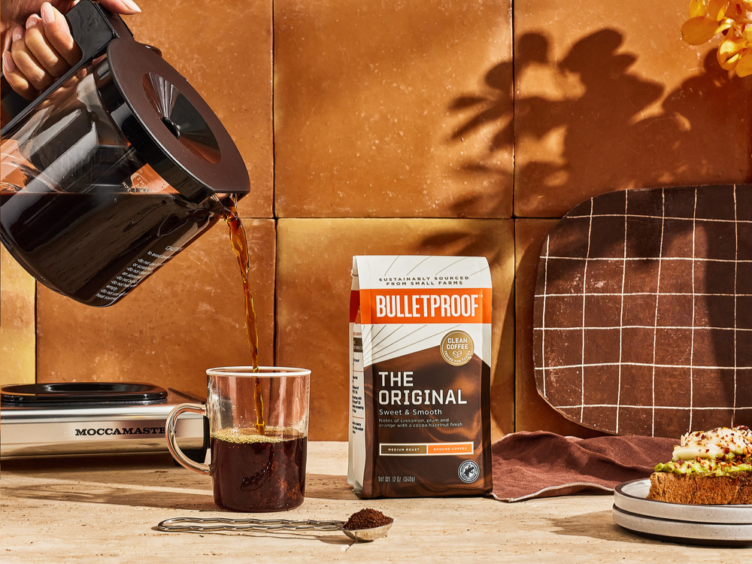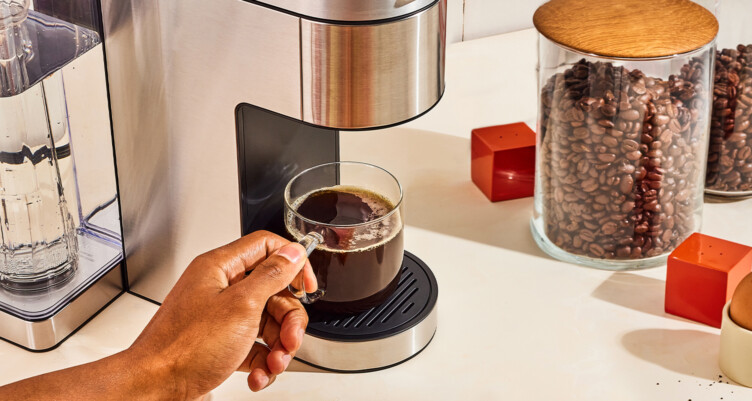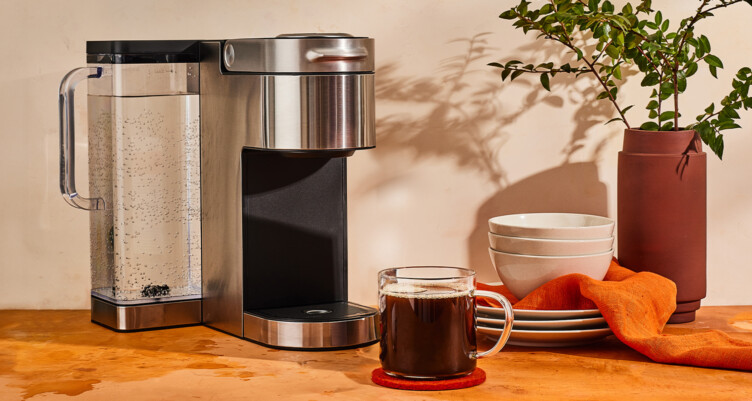How to Clean a Coffee Maker: Quick and Effective Cleaning Tips

- If coffee makers aren’t cleaned on a regular schedule, the moist environment becomes a breeding ground for bacteria and mold.
- A dirty coffee maker can damage the machine, be bad for your health and affect the taste and quality of the brew.
- A clean coffee maker boils down to step-by-step daily and monthly maintenance.
Did you know coffee makers can accumulate bacteria and mold?[1] If not, this is your wake-up call to clean one of the kitchen’s most-loved appliances. Take a few minutes to clean your coffee pot daily and make time for monthly maintenance. It’s good for your health, the longevity of the machine and the taste and quality of the brew.
Read on to learn how to clean a coffee maker for different coffee brewing methods.

How Often Should You Clean Your Coffee Maker?

This depends on how often you use your coffee maker. Coffee lovers who use their machines every day should clean the coffee maker daily and perform a deep clean once a month. Occasional coffee drinkers can get away with a deep clean every three to six months.[2]
The process of cleaning can be tiring (especially when it’s the morning and you’re in a rush), but the benefits are enough to perk anyone up. Descaling your coffee machine removes mineral buildup. This prevents the machine’s tank and tubes from getting clogged and helps ensure that the machine can make fresh, delicious coffee for a long time.

How to Clean a Coffee Maker Daily
If you can’t remember the last time you cleaned your coffee maker, it’s time to get scrubbing. Other signs that your machine needs some love include:
- Brewing time takes longer than usual
- Your coffee tastes bitter
- Unusual noises while operating
- Visible mineral buildup
- Coffee stains or grime on the machine
Follow this daily guide for a clean coffee maker:
Drip coffee maker
What you’ll need:
- Soap and water
- Dish sponge
- Damp towel
- Dry towel
What to do:
- Unplug the coffee machine and discard the used coffee grounds (these can also be used as gardening compost).
- Disassemble the removable parts, such as the water tank, carafe and filter basket.
- Rinse the items and then towel- or air-dry.
- Using a damp towel, wipe down the coffee machine. Towel-dry.
Keurig and other single-serve coffee makers
What you’ll need:
- Soap and water
- Dish sponge
- Damp towel
- Dry towel
What to do:
- Unplug the machine and disassemble the removable parts. This includes the water reservoir and lid, drip tray and K-cup holder.
- Remove the water filter from the water reservoir and set it aside.
- Fill the sink with warm, soapy water and wash the removable parts.
- Rinse the items and then towel- or air-dry.
- Using a damp towel, wipe down the coffee machine. Towel-dry.
- Return the water filter back to the water reservoir or replace it with a new one.

How to Deep Clean a Coffee Maker
When it comes to cleaning a coffee maker, there are a lot of moving parts. In addition to the steps above, descale your machine monthly to remove mineral deposits.
Some machines have descaling kits for sale. But a simple, cost-effective solution lives in most people’s cupboards: white distilled vinegar. Note: If you don’t have vinegar, you can use equal parts baking soda and water.
Follow these steps to perform a monthly deep clean.
Drip coffee maker
What you’ll need:
- White distilled vinegar
- Water
- Damp towel
- Dry towel
What to do:
- Add a 50-50 ratio of water and white distilled vinegar to the reservoir (4 to 5 cups is usually enough).
- Turn on the coffee maker’s brew cycle and let it brew halfway.
- Turn off the machine and let the mixture stand for 30 minutes.
- Put a filter in the basket and run the machine through a brewing cycle.
- Discard the vinegar mixture and replace the filter with a fresh one.
- Add fresh water to the reservoir and run the brewing cycle.
- Repeat this process until the vinegar smell is gone.
- Using a damp towel, wipe down the machine and towel-dry.
Keurig and other single-serve coffee makers
Keurig machines should undergo a descaling process every three to six months[3], according to the company. It’s also recommended to replace the water filter every three months.[4]
Nespresso recommends a descaling process every three months or every 300 capsules, whichever comes first.[5]
What you’ll need:
- White distilled vinegar
- Water
- Damp towel
- Dry towel
What to do:
- Add a 50-50 ratio of water and white distilled vinegar to the reservoir (about two cups each, but the exact amount depends on the water reservoir size).
- Place a mug underneath to catch the vinegar water.
- Run the brew cycle without using a K-cup and repeat until there is no more water in the reservoir.
- Rinse the reservoir and replace it with fresh water. Keep running the brew cycle without a K-cup until the vinegar smell is gone.
- Using a damp towel, wipe down the machine and towel-dry.
For a cup of coffee that’s good to the last drop, learning how to clean a coffee maker is non-negotiable. Both daily and monthly cleanings prevent mold and bacteria from accumulating. You should also check the manufacturer’s manual for specific cleaning requirements. Some coffee machines, for example, have a clean button, which can make the process easier.
Sign up for early access to sales, product launches, the latest Bulletproof news and more!



